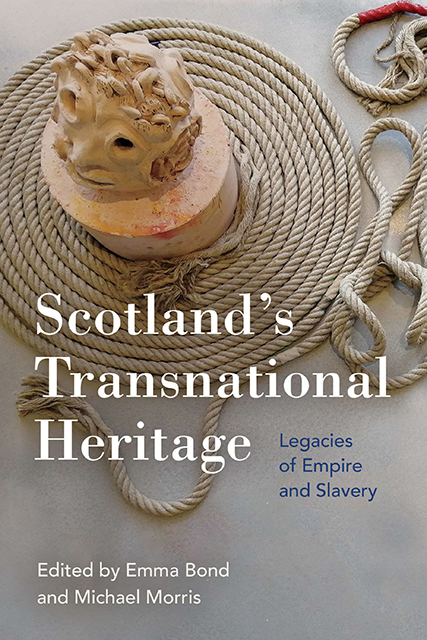Book contents
- Frontmatter
- Contents
- List of Figures
- Notes on Contributors
- Acknowledgements
- Foreword: Fostering Recognition under the Luxury of Amnesia
- Chapter 1 An Introduction to Scotland’s Transnational Heritage: Sites, Things and Time(s)
- Part I Transnational Sites
- Part II Transnational Things
- Part III Transnational Time(s)
- Afterword: Building Solidarity: Moving Towards the Repatriation of the House of Ni’isjoohl Totem Pole
- Index
Chapter 3 - Textiles in Transition: Linen, Jute and the Dundee Region’s Transnational Networks, c.1740—1880
Published online by Cambridge University Press: 25 October 2023
- Frontmatter
- Contents
- List of Figures
- Notes on Contributors
- Acknowledgements
- Foreword: Fostering Recognition under the Luxury of Amnesia
- Chapter 1 An Introduction to Scotland’s Transnational Heritage: Sites, Things and Time(s)
- Part I Transnational Sites
- Part II Transnational Things
- Part III Transnational Time(s)
- Afterword: Building Solidarity: Moving Towards the Repatriation of the House of Ni’isjoohl Totem Pole
- Index
Summary
Introduction
Textiles have long been recognised as both agents and protagonists in global networks of cultural and commercial exchange. Touching on the realms of economic, technological, social and cultural practices, crossing the boundaries of public and personal space, they are an ideal conduit through which transnational networks can be discussed. Focusing on the transition from linen in the eighteenth century to jute in the nineteenth century demonstrates how regional, European, transatlantic and Asian connections facilitated the exchange of raw materials, knowledge and, of course, finished products. Even when focusing on the history of a particular region, such as Dundee and east-central Scotland, it is apparent that the networks, connections and systems in place were sophisticated, complex and geographically and socially far-reaching; neither the linen nor the jute trade operated in a vacuum. Equally clear, however, is that the support of the British state in the success of the coarse textile history of Scotland was crucial, even though the nature of this changed markedly over time. While the transnational approach normally decentres the nation state and focuses on connections and networks between ‘disparate people and places that crisscross national borders’, the ‘national frame’ perpetuated and formulated by government intervention is ever present. Encompassing the transition from pre- to mechanised production, and the shift from colonial to imperial networks, Scotland’s linen and jute industries provide us with an opportunity for transnational and nation-state frameworks to be assessed simultaneously, along with the symbiotic impact of the economic, social and cultural connections that these created. What this chapter also reveals is the extent to which the ascendancy of Dundee jute in the second half of the nineteenth century was built upon foundations laid in the earlier decades of the preceding century.
Scottish linen and the British state: regional exploitation of transatlantic opportunities
Linen is one of the most versatile and ubiquitous fabrics in the history of cloth and clothing, with uses including the finest clothing, household linen, and even wrappings for food. In the words of Patrick Lindsay in 1733, it was ‘a Commodity of universal Use, from the Prince to the meanest subject’.
- Type
- Chapter
- Information
- Scotland's Transnational HeritageLegacies of Empire and Slavery, pp. 38 - 54Publisher: Edinburgh University PressPrint publication year: 2023



